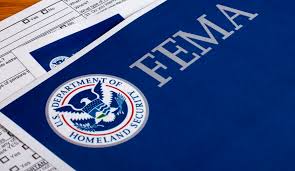By Matt A. Mayer
From 1787 to 1992, states struck by disasters handled the vast majority of them on their own. But since then, the federal government has been taking over disaster management at an ever-increasing pace.
From 1953 to 1993, the Federal Emergency Management Agency issued an average of 29 declarations of emergency per year. The annual averages varied by administration, from a low of 13.3 in the Eisenhower era to a high of 44 during the Carter years.
But since 1993, presidents have become increasingly enamored of the pork-barrel political benefits attached to FEMA activism. Over the past 18 years, FEMA has issued 1,970 disaster declarations. That averages out to 109 per year – almost four times the average for the previous 40 years.
In the election year of 1996, FEMA set the single-year record with 157 declarations. Last year, FEMA set the single-year record for major-disaster declarations with 58 – despite the total absence of any hurricanes or strong earthquakes.
In his first two years, President Barack Obama has issued 216 FEMA declarations, just nine fewer than Ronald Reagan’s eight-year total. Thankfully, his current pace (if he serves two terms) should come in under President George W. Bush’s record of 1,036 FEMA declarations.
So Washington has pretty much federalized disasters, you say. How does that hurt Ohio?
Ohioans are paying far more into FEMA than they get out of it. Financially speaking, the federalization of disasters leaves us as enormous net losers.
Since 1993, Ohio has received 25 FEMA declarations, which equates to 1.4 per year. The last one came in October 2008 because of wind damage from Hurricane Ike. In the 27 months since Ohio’s last declaration, FEMA has declared 238 emergencies elsewhere.
When FEMA issues a declaration, 75 percent or more of the cost for dealing with the problem gets shifted from the taxpayers of the affected state to the federal government, which really means to the taxpayers in the other, nonaffected states. As a fairly infrequent recipients of FEMA declarations, Ohioans are subsidizing those elsewhere who more frequently – and, in some areas, routinely – experience what FEMA now deems to be disasters.
Certainly, Ohioans willingly kick in our share for disasters such as Hurricane Katrina or the September 11 attack, that have a national impact on our economy. But, why should Ohioans subsidize tornadoes in Oklahoma, floods in Iowa, fires in Colorado, snowstorms in Massachusetts or tropical storms in Florida? Those events affect local economies but have no national implications.
We shouldn’t be subsidizing these events, just as taxpayers in those states shouldn’t subsidize our floods or snowstorms. If each state kept its share of the federal taxes that FEMA spends on noncatastrophic disasters, each state would have the resources to handle its own disasters without federal involvement. Frankly, Ohio already takes care of itself, but we still get stuck with the bill for other states’ routine disasters.
The federalization of disasters isn’t just about money. The more time FEMA spends handling commonplace disasters, the less it spends preparing for truly catastrophic events such as Hurricane Katrina. At the same time, as states become dependent on the feds for disaster relief, they increasingly underfund their own emergency-management operations. As a result, neither the federal government nor state governments are truly prepared for a catastrophic event.
Ohio is not the only state in this situation. FEMA roulette creates more net loser states than net winners. Isn’t that the case with a lot of other federal programs? With governments at all levels going broke, it is time we had a national dialogue on where we want the locus of power and taxation in our lives to be.
Whether it is FEMA, Medicaid, health care, education or transportation, why is federalization the default position? It is more efficient and less expensive for states to take power and responsibility back from Washington. State capitals will provide more accountability and transparency than the nation’s capital, regardless of party control.
With federal employees being the most expensive government workers, we would save many tax dollars by running programs entirely ourselves. We do not need Washington to tell us how to handle disasters, treat our poor and uninsured, educate our kids or keep up our roads.
It’s time states put their hands up, not out. We’ve had too many disasters coming out of Washington.
This article was written while Matt Mayer was President of the Buckeye Institute and originally appeared in The Columbus Dispatch.

